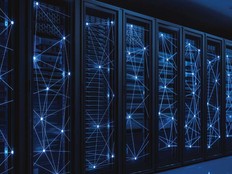All-Flash Storage Keeps Things Humming in Modern Data Centers
To get the best performance for the least cost, servers, networks and storage components must play well together. Good storage is a must for workloads requiring a high volume of input/output operations per second (IOPS), such as virtualized servers and virtual desktop infrastructure, and to keep pace with powerful server and networking solutions.
Enter all-flash storage arrays and solutions that employ Non-Volatile Memory Express (NVMe) to boost performance and bring architectural balance to the data center. IT leaders considering such systems should keep these tips in mind.
Consider All Costs of Storage
All-flash storage can be expensive, but admins should view the expense in context of its capabilities and the value it delivers. Reducing storage expense could increase costs elsewhere; for example, storage can directly affect the performance of a VDI deployment. A broad interpretation of ROI weighs the productivity of all system users. Although a storage system that slows performance might reduce the cost of the VDI deployment, it can also hamper productivity and thus increase personnel costs.
Simplify Storage Management with Software Tools
Some all-flash storage arrays require admins to install specialized software on all servers that access the storage. This can improve performance and expand capabilities, but it also adds complexity. Management software that consolidates storage monitoring and control into a single dashboard can help teams handle this. Effective management software permits easy configuration of the entire system, includes robust performance monitoring and predictive alerts, and helps staff implement planned upgrades.
Align Solutions with Application Requirements
Implementing an architecturally balanced storage system requires a deep understanding of application performance requirements. NVMe technologies work well in deployments that emphasize IOPS. Drives that employ this technology generally deliver a tremendous number of IOPS (perhaps 400,000 or more per device), compared to hundreds of IOPS per device from a traditional hard disk drive. With such a disparity, it doesn’t take long to justify the additional cost of NVMe.
Examine Hyperconvergence for Cost-Effectiveness
The superior performance of an all-flash solution may not align with the practical realities of budgetary pressures, but increased storage performance is still possible with targeted uses of all-flash storage. Consider using hyperconverged systems in virtualization deployments, which permits the distribution of solid-state drives across the infrastructure rather than procuring a centralized all-flash array. This also lets storage performance scale incrementally with server capacity. Outside of virtualization, you can accelerate workloads by using solid-state drives as a ZFS Intent Log cache on a Linux file server.









